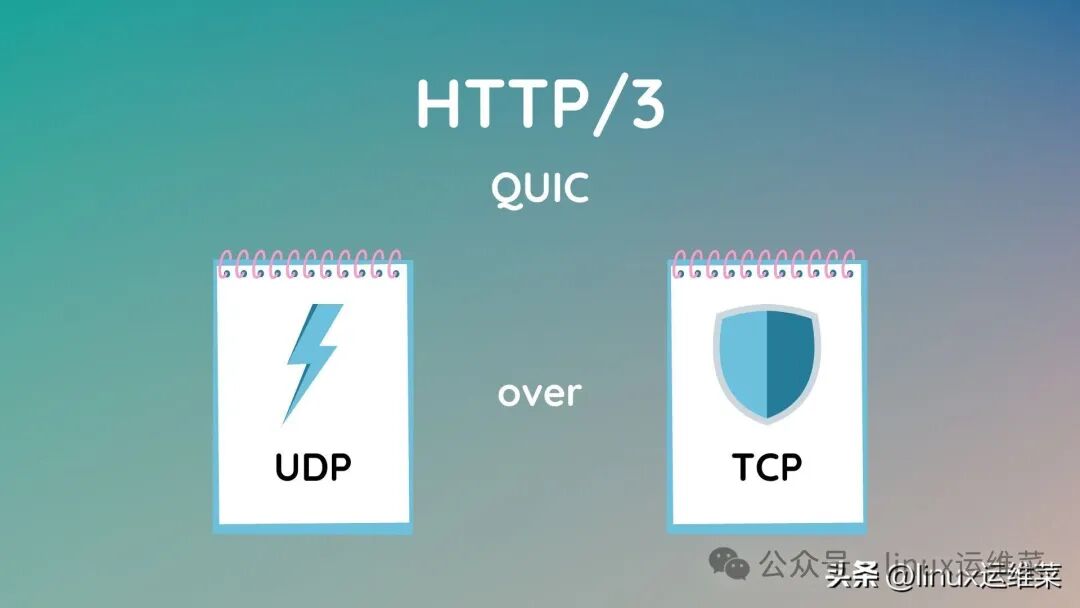Enabling HTTP/3 on Caddy Server: How to Make Your Website Lightning Fast?
In today’s rapidly evolving internet technology landscape, HTTP/3 is revolutionizing traditional web transmission models. As the first HTTP standard based on the QUIC protocol, it not only significantly enhances website loading speeds but also effectively addresses network fluctuations and weak network environments on mobile devices. Caddy server, with its “out-of-the-box” features, has become the preferred tool for developers worldwide to deploy HTTP/3. This article will guide you step-by-step on how to unlock HTTP/3 with Caddy, making your website faster than ever!

1. Why is HTTP/3 a Revolutionary Upgrade?
Although the traditional HTTP/2 protocol supports multiplexing, the underlying TCP protocol has a fatal flaw:A single packet loss can cause the entire connection to stall (known as “head-of-line blocking”). HTTP/3 addresses this pain point through three major innovations:
- UDP-based, lightning-fast connectionsQUIC protocol is built on UDP, eliminating the need for the traditional TCP three-way handshake, allowing for0-RTT (zero round-trip time) on the first connection. Real-world data shows that page loading speeds can increase by up to 30% in weak network environments.
- Intelligent packet loss resistance, continuous connection during network switchingWhen users switch from Wi-Fi to 4G, HTTP/3 can maintain session continuity through the **Connection Identifier**, avoiding connection interruptions caused by IP changes in traditional protocols.
- Native encryption with no blind spotsQUIC protocol mandates TLS 1.3 encryption, ensuring that even transmission metadata is encrypted throughout, completely eliminating the risk of man-in-the-middle attacks. This perfectly aligns with Caddy’s default feature of automatically issuing Let’s Encrypt certificates.

2. Practical Guide to Configuring HTTP/3 on Caddy
Environment Preparation (Example for Linux Systems)

- Upgrade Caddy to v2.6.0+
sudo apt update && sudo apt install caddy -yCaddy natively supports HTTP/3 starting from v2.6, with no additional plugins required.
- Open UDP port 443QUIC protocol relies on UDP transmission, which needs to be allowed through the firewall:
sudo ufw allow 443/udp && sudo ufw reloadConfiguring Caddyfile (Key Code Analysis)
# Globally enable HTTP/3 (while also compatible with HTTP/1.1 and HTTP/2){ servers { protocols h1 h2 h3 # Three protocols coexist }}# Domain configuration (example for reverse proxy)yourdomain.com { reverse_proxy localhost:3000 # Backend service address header Strict-Transport-Security "max-age=31536000;"# Force HTTPS}Code Interpretation:• protocols directive enables multi-protocol support with one click, and Caddy will automatically negotiate the best protocol• No need to manually specify the certificate path, Caddy automatically requests Let’s Encrypt certificates by default
Docker Deployment Solution (Suitable for Cloud-Native Environments)
Directly use the official image, adding UDP port mapping indocker-compose.yml:
services: caddy: image: caddy:latest ports: - "80:80" - "443:443" - "443:443/udp" # Key! Enable QUIC protocol volumes: - ./Caddyfile:/etc/caddy/CaddyfileThis configuration has been tested successfully on platforms like Tencent Cloud and AWS.
3. Performance Tuning and Pitfall Avoidance Guide
- Certificate Management TrapsIf using custom certificates, ensure the certificate chain is complete. It is recommended to manage certificates automatically through Caddy to avoid the operational risks of manually updating expired certificates.
- Browser Compatibility HandlingCurrently, Chrome, Firefox, and Edge all support HTTP/3, but Safari has not yet fully adapted. Caddy will automatically downgrade to HTTP/2 to ensure compatibility.
- High Concurrency Scenario OptimizationIn theservers configuration block, add:
servers { max_concurrent_streams 1000 # Increase QUIC concurrent stream count}- This can effectively enhance the performance of video streaming and real-time communication services.
4. Killer Application Scenarios for HTTP/3
• Mobile E-commerce Platforms: Users can smoothly load product pages even in unstable network scenarios like subways and elevators• Online Education Live Streaming: QUIC protocol reduces the stuttering rate of 1080P videos by 60%• Global SaaS Services: Latency for cross-border access is reduced by 50%, allowing European users to access Asian servers with sub-second response times• IoT Device Communication: Supports massive devices online simultaneously, with a single server capable of handling over 100,000 concurrent connections
Conclusion: The Future is Here, Are You Ready?
According to Cloudflare statistics, 38% of websites globally now support the HTTP/3 protocol. As developers, seizing the technological advantage not only enhances user experience but also injects new momentum into business growth. Log into your server now, follow this tutorial to complete the configuration, and experience “light-speed” network acceleration!